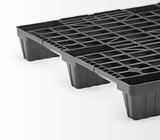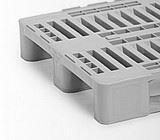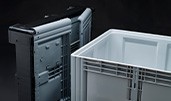To this must be added the greater social awareness and the environmental commitment acquired by many of the organizations, two priority points at present.
For this reason, the use of materials and the application of more sustainable production and logistics systems have become an obligation on the part of companies. But what is meant by green logistics applied to warehousing? In Naeco, previously Nortpalet, we explain it to you.
What is green storage and what benefits does it bring to the logistics area?
Green storage is a widespread concept nowadays and it refers mainly to all those eco-friendly practices that are carried out in the supply chain and in the storage area with the aim of protecting the environment.
It has been proven that developing and managing sustainable and ecological initiatives is positive for the health of our planet, makes companies more competitive and better valued on a social level and, therefore, generates more economic benefits. This encourages organizations to obtain all kinds of certificates that certify their environmental commitment.
To achieve them, it is necessary to apply measures that promote sustainability, as well as optimize facilities, including those dedicated to storage, always based on more ecological criteria.
Key factors in the design of a green and sustainable warehouse
To have a more ecological warehouse, it is necessary to plan a strategy that allows optimizing spaces and saving energy costs. Here are some of the most widespread measures and trends in favour of green storage and logistics sustainability:
• Take advantage of natural light or low consumption lighting. Having a good lighting installation is crucial when it comes to conserving and saving energy inside a warehouse. Skylights stand out among the cheapest and easiest solutions, which allow daylight to enter. Solar panels (which generate clean energy) and LED sensors (which are activated by movement and can be placed, for example, in low-consumption lamps) are other very interesting options to reduce costs, control energy consumption and be less dependent. of fossil fuels, key to reducing carbon emissions.
• Install insulating doors that block heat or cold transfer. By means of this type of doors we will prevent the cold or heat from escaping from the interior of the warehouse. In this way, we will maintain the right temperature and reduce the energy bill.
• Recyclable and reusable plastic pallets. Using reusable pallets, made with recycled plastic and recyclable at the end of their useful life in the warehouse, will help us to drastically reduce waste and environmental impact. In addition, these pallets are perfect for automation, since they are light and have a uniform weight and size, thus facilitating the handling, calibration, and distribution of the merchandise.
• Automated storage and retrieval systems. The use of automated tools in warehouses reduces the risk of human error, improves efficiency, and saves costs on product returns. In addition, it minimizes carbon emissions, optimizes space more efficiently and reduces energy use.
These are just some of the measures that can be carried out if we want to have a green and sustainable storage facility. It is an investment with great potential that improves the environmental impact, economic profitability, and reputation of any company.














